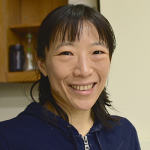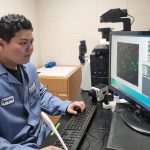Hitting the Bullseye: New Method Takes Aim at Targeting Diseases with Antibody Drugs

Antibody drugs that target body proteins called G-protein-coupled receptors (GCPRs) hold great promise in treating conditions ranging from cancer and diabetes to Alzheimer’s and depression. GCPRs play a crucial role in many body processes, from regulating heartbeat and breathing to activating the immune system. However due to their complex geometry, as well as the difficulty of producing them in a lab, discovering antibodies that target GCPRs has been a challenge—until now.
If a disease is the dart board, the antibody drug is the dart. A team of Johns Hopkins engineers has devised a method that promises to make the process of designing these antibodies more efficient and accurate, making the dart more accurate and its tip sharper, increasing the likelihood of it attaching to its target.
“Approximately 33% of FDA-approved drugs target GPCRs, but only two of those are antibodies,” said P.J. Krohl, a graduate of the Whiting School of Engineering’s doctoral program in chemical and biomolecular engineering and lead author of the study, which appeared in Cell Reports Methods. “Our platform optimizes the process of discovering antibodies against these important targets.”
Researchers typically use diverse pools of antibodies known as “libraries” to screen billions of potential antibodies against a target of interest, such as a GCPR. The Hopkins team developed a whole-cell screening technique that enables them to select antibodies that attach only to the GPCR, while discarding those that bind to other cell surface molecules. Krohl considers this to be the study’s most significant discovery.
“Theoretically, there’s a certain number of specific binders in there from the beginning: Let’s say 10,” he said. “Our platform is useful for eliminating all the other junk and finding those 10.”
The team’s method uses a suspension-based platform in which solid particles or substances are dispersed in a liquid to create a mixture. Jamie Spangler, a team member, assistant professor, and William R. Brody Faculty Scholar in the Chemical and Biomolecular Engineering and Biomedical Engineering departments, said the new system is now more sensitive, improving its capability to detect interactions occurring in real time.
“The fact that our platform is fully in suspension allows constant mixing between the yeast and mammalian cells in 3D space, increasing the likelihood of interactions,” Spangler said. “It’s pretty versatile in this sense … the point of this whole method is you’re not just guessing your way through.”
While many teams making antibody-discovery studies keep their methods as trade secrets or publish them incompletely, the Hopkins researchers have published theirs in full.
“The purpose of this study is to demonstrate a platform that can be relatively easily implemented in a lab and to give others access so they can use it, too,” Spangler said.
Johns Hopkins researchers Justyn Fine, Kook Bum Kim, and Derek VanDyke also contributed to this project.
Story by Jonathan Deutschman





